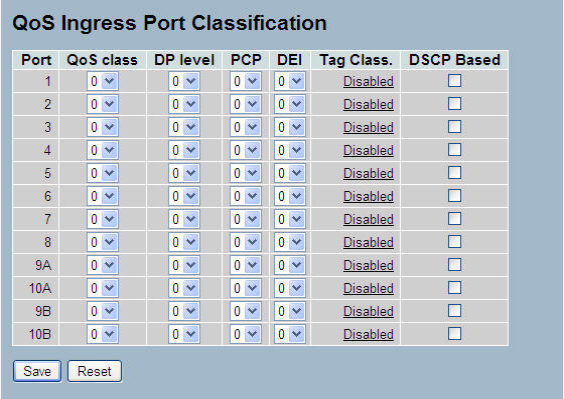
131
3-16 QoS
The switch supports four QoS queues per port with strict or weighted fair queuing scheduling.
It supports QoS Control Lists (QCL) for advanced programmable QoS classification, based on
IEEE 802.1p, Ethertype, VID, IPv4/IPv6, DSCP, and UDP/TCP ports and ranges.
Classifying incoming frames to a QoS class is very flexible. The QoS classification looks for
information up to Layer 4, including IPv4 and IPv6 DSCP, IPv4 TCP/UDP port numbers, and
user priority of tagged frames. This QoS classification mechanism is implemented in a QoS
control list (QCL). The QoS class assigned to a frame is used throughout the device for
providing queuing, scheduling, and congestion control guarantees to the frame according to
what was configured for that specific QoS class.
The switch supports advanced memory control mechanisms, providing excellent performance
of all QoS classes under any traffic scenario, including jumbo frame. A super-priority queue
with dedicated memory has strict highest priority in the arbitration. The ingress super priority
queue allows traffic recognized as CPU traffic to be received and queued for transmission to
the CPU even when all the QoS class queues are congested.
3-16.1 Port Classification
The section allows you to configure the basic QoS Ingress Classification settings for all switch
ports. The settings relate to the currently selected stack unit, as reflected by the page header.
Web Interface
To configure the QoS Port Classification parameters in the Web interface:
1. Click Configuration, QoS, Port Classification.
2. Scroll to select QoS class, DP Level, PCP, and DEI parameters.
3. Click the save button to save the setting.
4. To cancel the setting, click the Reset button.
It will revert to previously saved values.
Figure 3-16.1: The QoS Configuration


















